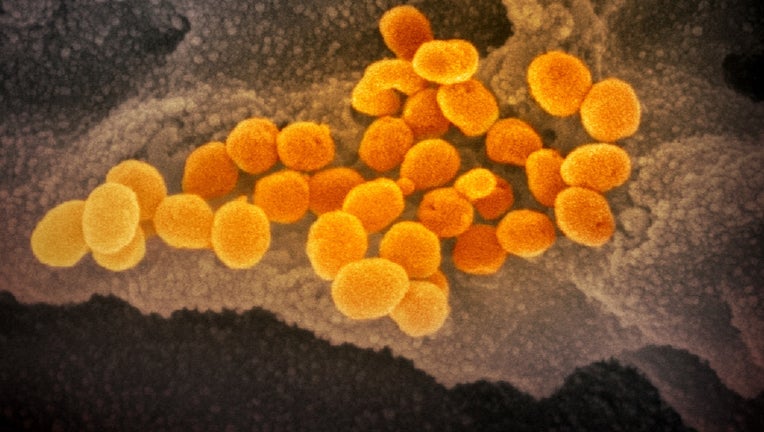University of Minnesota researchers identify mutations in novel coronavirus that allowed it to spread faster

This scanning electron microscope image shows SARS-CoV-2 (orange) — also known as 2019-nCoV, the virus that causes COVID-19. (National Institute of Allergy and Infectious Diseases-Rocky Mountain Laboratories, NIH)
MINNEAPOLIS (FOX 9) - Researchers at the University of Minnesota studied how mutations made the novel coronavirus attach more strongly to human cells, allowing it to infect and spread faster than similar viruses before it.
The novel coronavirus also has the scientific name SARS-CoV-2, which is closely related to the SARS virus that caused an impact in 2002 to 2003. In research published in the journal Nature, researcher Fang Li and her team determined a mutation in the structural makeup of a protein found on SARS-CoV-2 allowed the virus to connect to human cells more strongly than SARS.
During infection, a "spike" protein on a particle of SARS-CoV-2 attaches to a receptor protein in human cells, especially lung cells. Researchers found the SARS-CoV-2's spike protein had mutations in its molecular ridge, which made it more compact than those seen in SARS, so it was able to make a better connection to the human cells.
“In general, by learning what structural features of viral proteins are most important in establishing contact with human cells, we can design drugs that seek them out and block their activity—like jamming their radar,” said Li, a professor in the Department of Veterinary and Biomedical Sciences, College of Veterinary Medicine, in a press release.
Now, the research team is looking take the information learned about SARS-CoV-2's structure to develop antibodies or vaccines that can target how the virus binds to human cells.
The researchers also found genetic evidence that bats may be the source of SARS-CoV-2 and pangolins may act as intermediate hosts for the virus.

